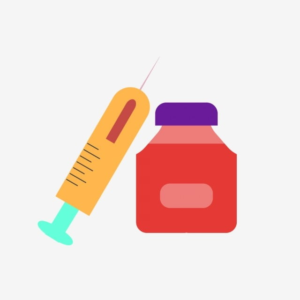What is Cushing’s disease?

Cushing’s disease is a disorder caused by excessive production of cortisol (stress hormone) by the adrenal cortex, which is the outer part of the adrenal gland. In normal pets, the pituitary gland (located at the base of the brain) produces adrenocorticotropic hormone (ACTH) that is released into the bloodstream stimulating the adrenal glands (located above the kidneys) into producing a steroid called glucocorticoid (i.e., cortisol). This is a naturally occurring steroid that helps the body respond to stress, regulate blood sugar levels, fat metabolism, skeletal muscles, nervous system, kidney function, immune response and the cardiovascular system.
How do pets develop Cushing’s disease?
Pet’s can develop Cushing’s disease in one of three ways:

- Pituitary dependent hyperadrenocorticism is the over secretion of ACTH by the pituitary gland causing the adrenal glands to overproduce glucocorticoids. This is typically caused by a pituitary tumor.
- Adrenal-based hyperadrenocorticism is the adrenal form of the disease that is usually caused by an adrenal tumor stimulating an over secretion of glucocorticoids.
- Cushing’s disease can occur when the pet hasbeen given high doses of steroids, either by injection or orally. This form of the disease will reverse as soon as the steroids are discontinued.
What are the symptoms of Cushing’s disease?

The symptoms of Cushing’s disease commonly mimic other diseases and are often mistaken for normal signs of aging. Since these symptoms gradually occur, it is important to know the typical signs that are associated with Cushing’s disease.
- Excessive thirst
- Excessive hunger
- Increased urination
- Lethargy
- General muscle weakness
- Enlarged, sagging abdomen
- Hair loss
- Thin, fragile, darkly pigmented skin
- Excessive panting
How will my veterinarian diagnose Cushing’s disease?

Diagnosing Cushing’s disease can be difficult, especially in the early stage of the disease. Your veterinarian will need to perform several lab tests which may include a complete blood count, internal organ function screen, urinalysis, ACTH stimulation test, a dexamethasone suppression test and possible X-rays to assess your pet’s total body function.
Is there treatment for Cushing’s disease?
There are several different treatment options. Depending on the type of disease, surgery can be performed. If an adrenal gland tumor is found, surgical removal may be an option. Since there are several different forms of adrenal tumors, treatment will be dependent upon the tumor type. Medical management is the most common treatment for the majority of canine Cushing’s disease. Approximately 80% of Cushing’s disease cases are of the pituitary form, but both the adrenal and pituitary forms respond effectively to oral medications.

Left untreated, Cushing’s disease will progress into life-threatening disorders such as kidney and liver failure, congestive heart failure, or diabetes, as well as a host of other chronic infectious ailments. There is no cure for pituitary Cushing’s disease but with the aid of available treatment options, the quality and length of your pet’s life can be prolonged for years to come. If your pet has been diagnosed with Cushing’s disease and started on medical management, it is important to obtain frequent recheck examinations to assess your pet’s response to therapy. Your veterinarian will help provide recheck examination guidelines to best accommodate you and your pet.